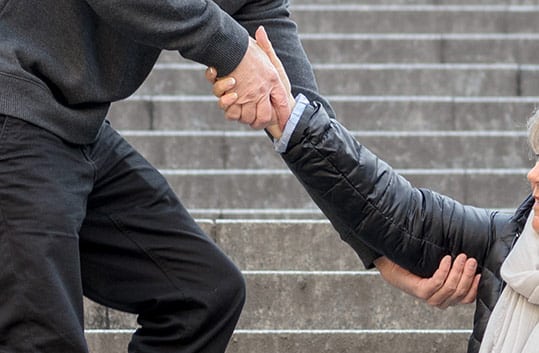Roundabouts have arrived in the Twin Tiers, and many drivers we’ve spoken with at the Ziff Law Firm are baffled about what they are supposed to do.
Roundabouts can be intimidating for all drivers, and older drivers can get very flustered with the different traffic pattern. Among the questions we’re hearing:
Are drivers supposed to stop before they enter the roundabout?
And once you’re in the roundabout, who has the right of way?
There are at least two new roundabouts in place or planned in Chemung County. The two are located on Route 13 in Horseheads, at Route 13’s intersections with Franklin Street and another at Old Ithaca Road. Two more are under construction on Maple Avenue on the south side of Elmira.
The New York State Department of Motor Vehicles has a great section in its website on roundabouts that helps take some of the mystery out of these unusual intersections.
The Pennsylvania Department of Transportation also has great information on roundabouts for Northern Tier residents.
The Insurance Institute for Highway Safety also has a great site on roundabouts that answers commonly asked questions.
To make it easier for readers, I have taken the information from the New York and Pennsylvania websites and turned it into an easy-to-read question-and-answer format.
So before you hit the road, do your reading homework!
Question: What is a roundabout?
Answer: A roundabout is a circular intersection with a center island where traffic moves counterclockwise around the center island. (From NYDMV)
Q: How do I drive through a roundabout intersection?
A: As you approach a roundabout, there will be a YIELD sign. Slow down, stop for any pedestrians or bicyclists in the crosswalk. Also be prepared to stop for any traffic already in the roundabout.
As you approach a roundabout with two or more traffic lanes, look for pavement markings and traffic signs that direct you to the correct lane for the road or turn you want to take.
Get in the correct traffic lane early. You can normally use the right traffic lane to go right and straight through the roundabout. You can normally use the left lane to go straight, to go left around the center island, or to make a U-turn.
At the YIELD sign, yield to all traffic (in both lanes) that approaches from the left in the circle. However, do not stop if the way is clear.
This is not a merge situation; you must stop for all traffic already in the roundabout. At a multilane roundabout, you must yield even if you will only use the right lane and the first exit from the roundabout.
Never pass other vehicles or change traffic lanes in the roundabout.
Traffic in a roundabout always goes counter-clockwise. The roundabout has ONE WAY traffic signs mounted in the center island. The signs help to guide traffic and indicate that the driver must stay to the right of the center island. (From NYDMV)
Q: Are roundabouts safer than other at-grade intersections?
A: Yes, because roundabouts have fewer conflict points, slower speeds and easier decision-making. When comparing a roundabout to a signal, studies show that roundabouts provide a 90 percent reduction in fatal crashes, 75 percent reduction in injury crashes, 30 percent to 40 percent reduction in pedestrian crashes, and 10 percent reduction in bicycle crashes. Roundabouts also improve pedestrian safety, offering two simple crossings of one-way traffic moving at much slower speeds. (From PADOT)
Q: What features are usually found in roundabouts?
A: A roundabout normally has all of the following: Yield entries, which require that a driver about to enter the roundabout must wait for a gap in the traffic inside the roundabout before entering the roundabout; traffic islands that separate the entries of the roundabout from the exits; designated crossing areas for pedestrians; and designated speeds of 15 to 20 mph. (From NYDMV)
Q: Can roundabouts handle as much traffic as other intersections?
A: Roundabouts typically carry about 30 percent more vehicles than similarly sized intersections with traffic signals during peak hours. During off-peak conditions, roundabouts cause almost no delay, but traffic signals can cause delays to side streets and left-turning traffic from a busy street. There is increased capacity at roundabouts because of the continuously flowing nature of yielding only until a gap is available vs. waiting at a traffic signal. (From PADOT)
The best advice we can give our clients is approach roundabouts slowly and be sure you don’t have any distractions — cell phones, loud music, arguments — as you navigate a roundabout.
Once you get the hang of it, it won’t be so nerve-racking.
Thanks for reading!
__________________________________________
ZiffLaw Attorney, Esq.
NY and PA Injury and Accident Attorney
The Ziff Law Firm, LLP
303 William Street
Elmira, NY 14901
Phone: (607)733-8866
Fax: (607)732-6062
Email: info@zifflaw.com
www.zifflaw.com



